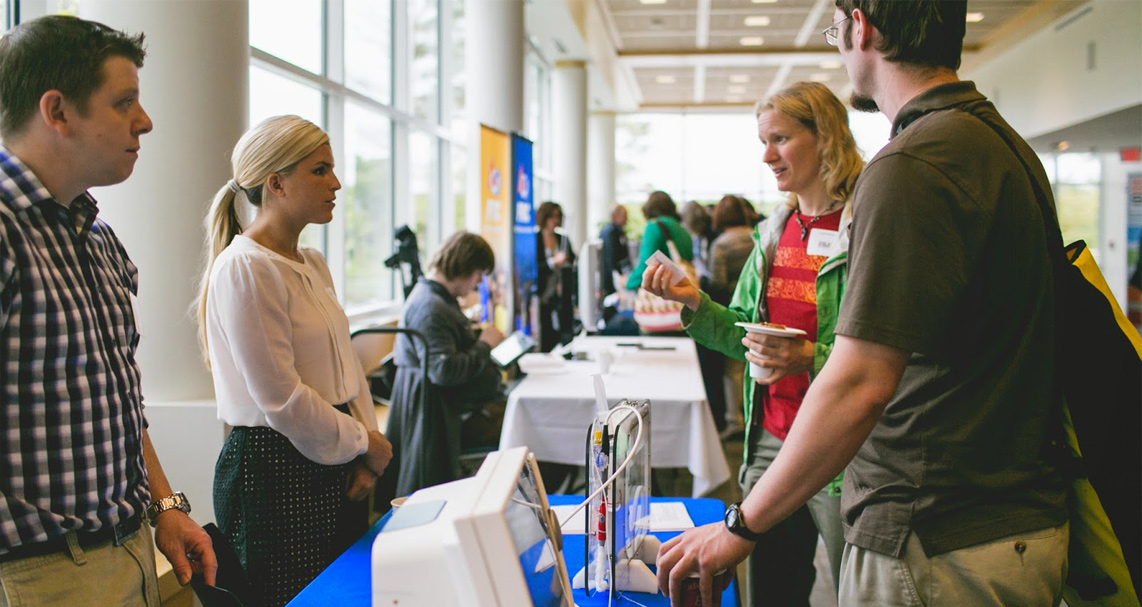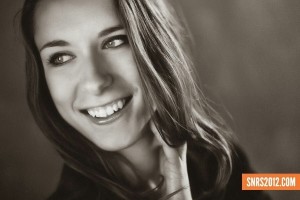STEM^2 Summit: Lighting the Fire for Science, Technology, Engineering and Mathematics
By Mary Hierholzer, ’16
“A little bit of desire is worth a whole lot of opportunity.”
Dean Kamen is an inventor, entrepreneur and advocate for science and technology. He, the man responsible for the Segway, was one of about 200 proponents for science, technology, engineering and mathematics (STEM) education at the STEM^2 Summit, which took place this past Wednesday in Gordon College’s Ken Olsen Science Center.
Hosted by ’04 alumnus Francis Vigeant of KnowAtom and Gordon Associate Professor of Education Priscilla Nelson, the STEM^2 Summit provided an opportunity for elementary school educators and administrators to hear from nine distinguished speakers who stressed the importance of immersing students in STEM from a young age.
“We need to start students young, get them involved, and light a fire beneath them,” Massachusetts Congressman John F. Tierny said in the opening remarks. “Elementary educators are the ones to make this happen.”
After receiving a grant of $10,000 grant in 2013 from the Northeast Regional Readiness Center housed at Salem State University, STEM^2 held five monthly free workshops at Gordon. Now, the program has established a collaborative business model consisting of elementary educators, professors (those training teachers), education students, inventors and over 75 community school systems. It is being said by participants that this collaborative approach offers the very first networking structure with potential to be a model for other states across the country—one that can be replicated easily and adopted immediately.
Mr. Kamen and Dr. Bernard Gordon, inventor of modern analog-to-digital conversion, served as the summit’s keynote speakers. Also in attendance as lecturers were audio equipment designer Lewis Athanas; computer programmer, engineer, businessman and philanthropist Mark Gelfand; sports technology inventor Corky Newcomb; founder and President of 3D Printsmith LLC Sean O’Reilly; software programmer Jim Starke; and founder and CEO of Playrific, Inc., Beth Marcus. 26 North Shore STEM organizations were present to join in the dialogue with attendees.
The presenters shared personal stories of their childhood experiences—both lighthearted and heavy—with STEM, education and discipline.
“It isn’t enough to teach kids about technology,” Starkey said. “Kids have to learn about technology change and, ultimately, innovation. I don’t know whether or not innovation can but taught, but I do know it can be inspired.”
“It’s one thing to teach people about things, and another to improve their abilities to think,” Gordon said in his presentation.
Even for the non-scientifically-inclined, STEM^2 proved inspirational. The lessons of discipline, bravery and opportunity are applicable to anyone, no matter the stage of life or range of interests.
Attendees noted the recurring theme of parenthood. Nearly every speaker showed images of their parents to speak about the positive, challenging influence. Many also spoke of memorable educators from their own experiences. Those recurring themes left everyone thinking about their influences, a little more grateful for the hours set aside for homework after school, and even those pesky third-grade quizzes.
In his keynote talk, Kamen spoke of how in his business model for his nonprofit, he strove to replicate for the STEM community the encouraging, celebratory nature of athletics . This core idea became hugely successful, partially due to the countercultural nature of its approach: Culture does not celebrate inventors and engineers, he said.
Although our culture is endlessly fascinated by technology, society tends to celebrate the inventions, rather than the inventors. Is that a good or bad thing? Should we be celebrating the inventions or the inventors? Kamen suggested that more credit may be due to technological innovators, and that such encouragement could yield even greater advances in STEM fields. Dr. Gordon echoed in his lecture that engineers have a deep desire for recognition. Yet we rarely stop to think about the minds behind our computers and amazing new headphones that lay down a beat oh-so well.
What became so remarkable about the STEM^2 summit was the scope of its impact. As Kamen reflected on his experience as a misunderstood student, his story took on new life: It will not only influence his own path. It will not only influence the roughly 200 educators in the audience. The testimony will change the lives of each student that each teacher encounters in the future. One boy’s challenges will bring support and encouragement the lives of an incalculable number of scientifically curious children. And so it was with each of the dozens of innovative approaches to STEM education introduced at Wednesday’s gathering.
Even before any new educational model has been instituted, before the system has been reformed from top to bottom, STEM^2 has already done its job.
Mary Hierholzer ’16 is a communication arts major and history minor, and Editor-in-Chief of the Tartan. She hopes to study history and political science in graduate school, and to pursue a career in writing for intellectual publications. In the rare moments when Mary is not writing or conducting an interview, she enjoys good conversations, drinking coffee, exploring great literature, admiring art and discovering music.
 The Bell
The Bell
